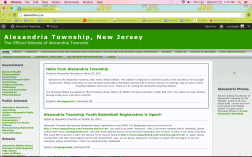By Jennifer Aaker and Andy Smith with Carlye Adler
The Dragonfly Effect is a must read for those inspired by the expansive opportunities presented by social media. Since the creation of the first blog, social media users and social do-gooders have scratched their heads trying to determine how to unite their two groups. How can social media be harnessed to promote positive changes and make a difference in the world today? This is the exact question that authors Jennifer Aaker and Andy Smith explore in The Dragonfly Effect. The book provides readers with a guide on “how to bring people together in the age of distraction, and how to inspire widespread change without money or power.”
The most convenient and helpful aspect of the book is its layout and language. Rather than give a boring presentation of the facts, The Dragonfly Effect uses simple language, headings, and “feature” boxes throughout the book making it useful for both business professionals and high-school students alike. Further, charts and diagrams are used often to simplify concepts and theories. Finally, by dividing the book into chapters (“The Dragonfly Body,” Wing 1, Wing 2, Wing 3, Wing 4 and “onward and upward), Aaker and Smith created a book ideal for referencing back to when developing social media initiatives.
Throughout the book, the authors ensure that readers truly understand concepts by providing in-depth examples of the concepts in action. These real life examples make the material more relatable and intriguing for the reader. Recognizable brands such as Zappos, Nike, and Toms also speak to the timeliness of The Dragonfly Effect, a stark contrast to many outdated manuals and guides.
In the constantly evolving world of social media, it can seem impossible to grasp the concepts needed to create meaningful and long-lasting social change. The Dragonfly Effect is a quick read and useful reference guide containing invaluable information for those seeking to harness the power of social media to make a difference.


















